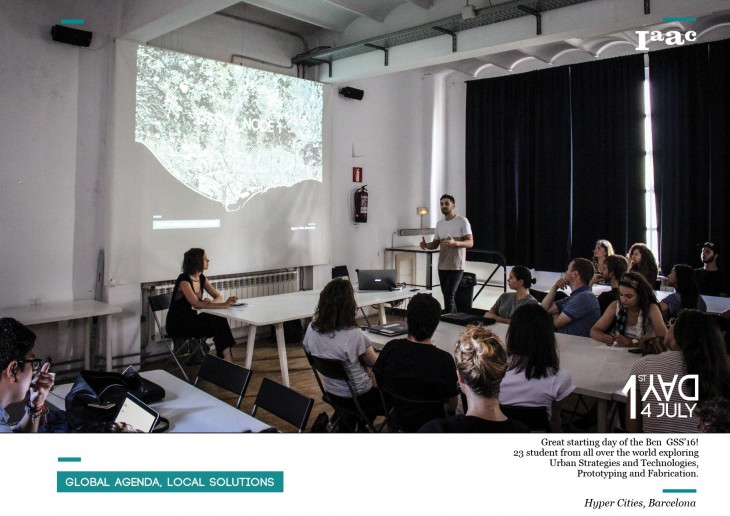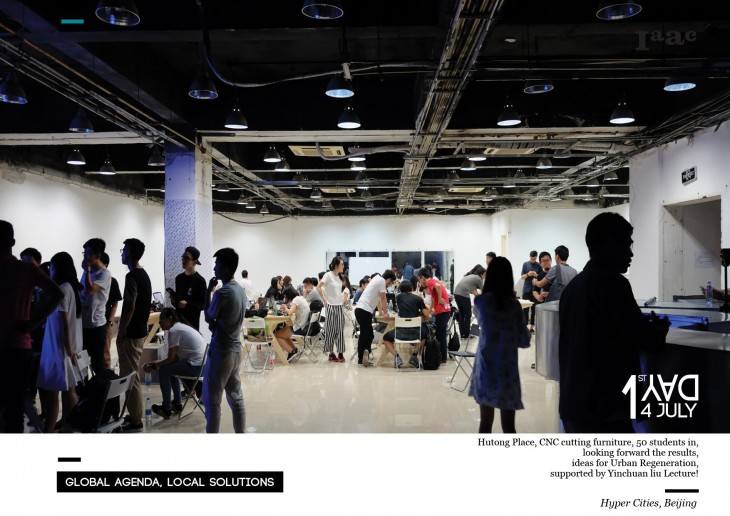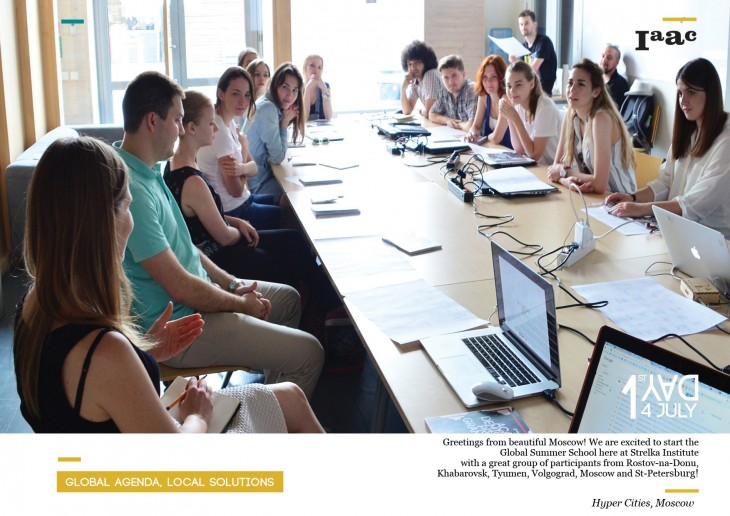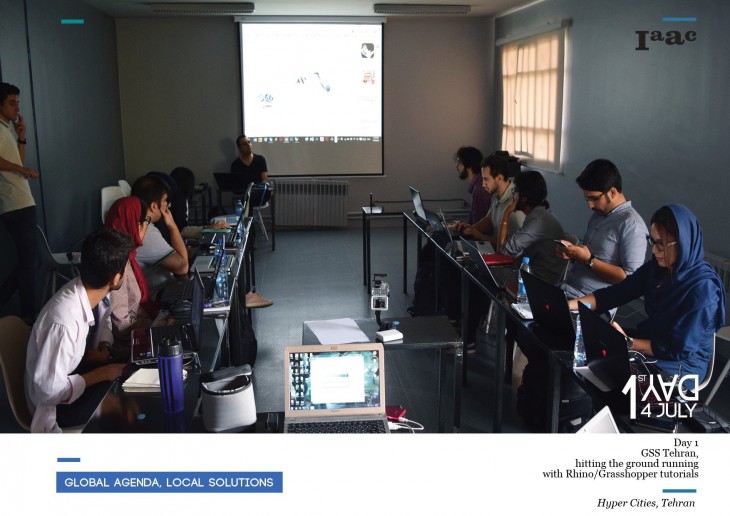IAAC Global Summer School Kick-off
Yesterday we had the kick-off of the IAAC Global Summer School, the biggest summer program in the world, with 110 students divided in six locations around the globe. So what was happening in Barcelona, NYC, Moscow, Tehran, Beirut and Beijing nodes?

GSS16 Barcelona started with twenty-three students coming to Barcelona with the aim to explore urban strategies and technologies, prototyping and fabrication. Through data exchange and interaction, this two-week course will explore the connection between multi-territorial cities, collecting and visualizing data into projections, interpretations, actions translated through robotic process of fabrication.

GSS16 Beijing node kicked-off in Hutong Place, with fifty students in, looking forward to ideas for urban regeneration, supported by Yinchuan Liu lecture. The course will encourage students to pick specific elements or part of Beijing’s historical buildings – such as courtyards, gateways, roofs, facades etc. – to rethinking how to activate the public space by using digital fabrication techniques.

GSS16 Moscow node started at the Strelka Institute with a group of participants coming from Rostov-na-Donu, Khabarovsk, Tyumen, Volgograd, Moscow and St-Petersburg. The course will focus on a dynamic and interactive understanding of architecture, where biological, informational, digital and human systems communicate and coevolve.

GSS16 Tehran node kicked-off with Rhino and Grasshopper tutorials. The summer course, in collaboration with local municipalities, will create an incision in Tehran’s urban fabric, identifying and investigating specific sites in need of rehabilitation for public benefit.
The GSS16 NYC node aims at investigating emerging forms of production of urban spaces reimagining the physical city through intelligent and mediated processes.
The GSS16 Beirut Node, in response to enforcing community awareness and in aim of shedding light on the need for public engagement in the well-being of their city, will tackle the environment’s toxicity through interpreting and communicating real-time data (RTD).